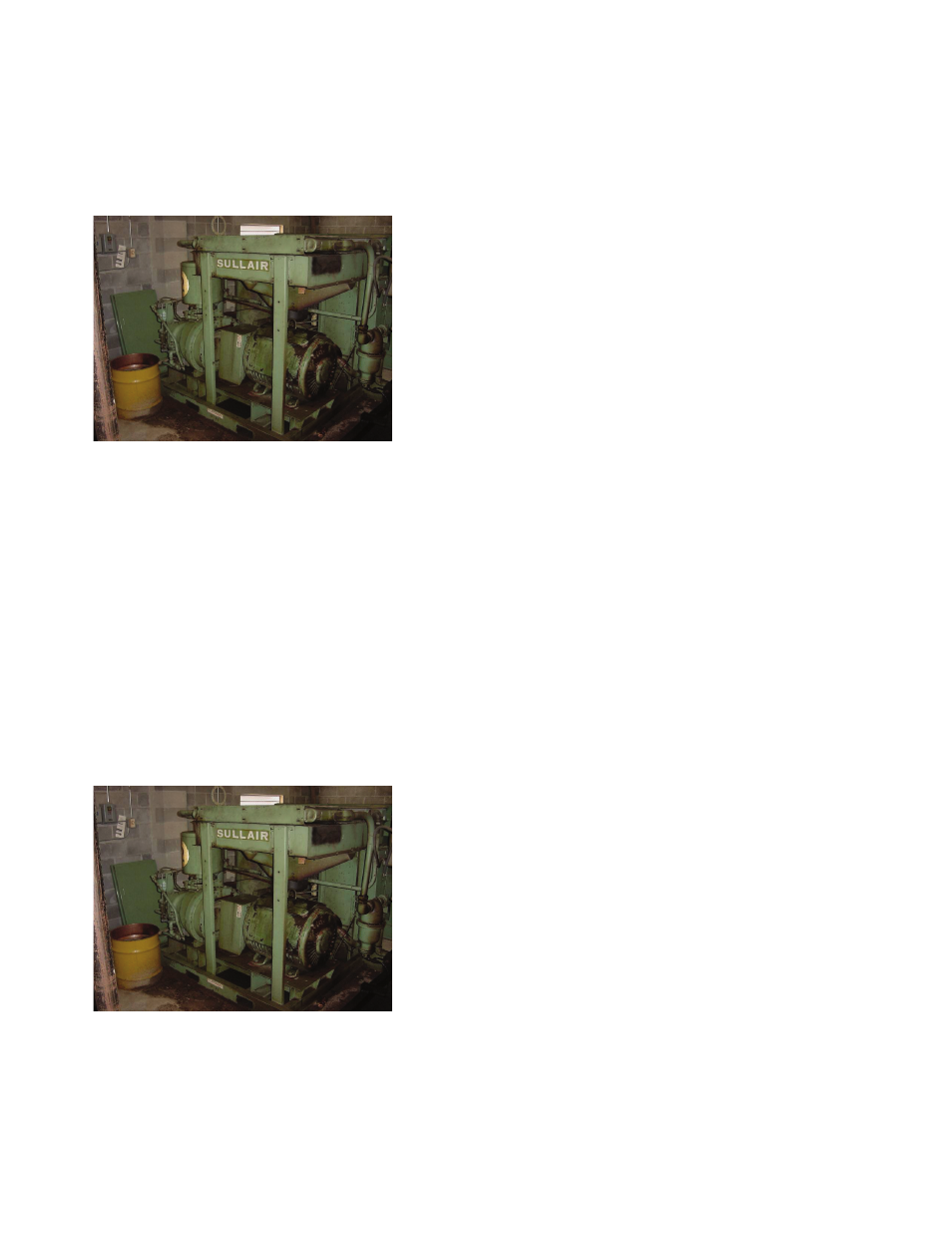Retrotec USACE User Manual
Page 215

Appendix D D85
be taken when reenergizing these compressed air lines in the future, because
corrosion may have taken place inside the pipes that were shut down. These
pipes should be fl ushed before they are used again.
D.4.3.12 Use of Oversized Equipment (Ineffi ciency)
Figure D138. Large air compressor that often
runs at part load.
The use of oversized equipment results in air compressors operating in an un-
loaded condition (Figure D138). When air compressors operate at part load,
they use more energy than at full load. For large central systems, it may be
better to use smaller multiple air compressors with controls that sequence
their operation on and off than a couple large machines that operate most of
the time in an unloaded condition. The use of additional receivers may also
smooth out the operation of compressors. A receiver is a large tank that is fi lled
with compressed air, and its volume is used to provide for peak compressed air
demands. The tank provides a place to store compressed air when the demand
is low. The air-compressing equipment can then operate at an effi cient rate
while satisfying a varying load.
D.4.3.13 Use of Warm Building Air for Compressors’ Air Intake
(Ineffi ciency)
Figure D139. Rotary screw compressor using
building air.
Warm air is less dense than cooler air, and more volume is needed to obtain the
same volume under pressure. Thus more energy is required with warmer air to
achieve the same compressed air fl ow rate, so it is better to use outdoor air as
the air source for the compressed air system (contrast with Figure D139).
